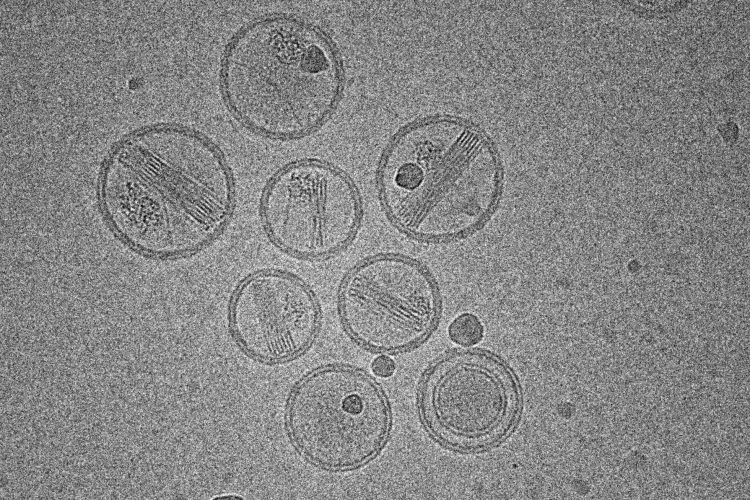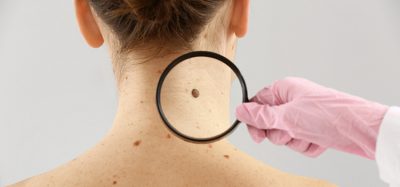New lipid nanoparticle boosts mRNA delivery fivefold in cancer study
Posted: 6 August 2025 | Drug Target Review | No comments yet
Japanese researchers have engineered a new lipid nanoparticle that delivers mRNA to cells five times more effectively, resulting in stronger immune responses and tumour suppression in mice.


Researchers at Nagoya University in Japan have created a new lipid nanoparticle that enhances the delivery of mRNA into cells by five times – offering a potential breakthrough for cancer vaccines. By attaching a sulfur-containing ring structure –known as a cyclic disulfide – to lipid molecules, the researchers enabled significantly more mRNA to escape cellular components that normally degrade it. When tested as a cancer vaccine in mice, this system successfully halted tumour growth. The findings were published in RSC Medicinal Chemistry.
Escaping the endosomes
During nanoparticle formulation, mRNA and lipids spontaneously assemble into spherical structures that protect the genetic material. However, once inside cells, more than 95 percent of mRNA becomes trapped in areas called endosomes – where it is degraded before it can function. Endosomes act as cellular gatekeepers, sorting and breaking down substances that enter the cell.
The newly developed disulfide-based nanoparticles solve this problem by helping mRNA escape from these organelles – allowing it to reach its target and direct cells to produce antigens. These antigens stimulate the immune system to create antibodies and activate immune cells against cancer.
“The modified lipids showed significant improvements in mRNA delivery. Some formulations achieved up to 6-fold better efficiency in cell culture experiments and 5-fold improvement in mice compared to standard methods,” explained Dr Seigo Kimura, lead author and researcher from the Integrated Research Consortium on Chemical Sciences (IRCCS) at Nagoya University.
Chemically engineering better mRNA delivery
To achieve these results, the team incorporated cyclic disulfide molecules into two widely used lipid formulations: MC3 – a standard nucleic acid delivery system – and SM102 – a component of a COVID-19 vaccine. The enhanced versions were tested first on human cells before then being tested in mice to see how effectively they delivered mRNA and stimulated immune responses.
The modified particles outperformed standard formulations in every aspect – cellular delivery, endosome escape, immune activation and tumour suppression.
The modified particles outperformed standard formulations in every aspect – cellular delivery, endosome escape, immune activation and tumour suppression. Approximately 20 percent of each nanoparticle’s lipid content consisted of the new cyclic disulfide lipids.
Dr Kimura noted, “While disulfide chemistry has been used to improve drug delivery for years, it has only worked in laboratory cell cultures and not in living organisms. This study is the first to demonstrate that disulfide chemistry can improve mRNA delivery in vivo and work effectively as a cancer vaccine in mice.”
Overcoming the challenges of cancer vaccines
Cancer is still the second leading cause of death worldwide, and developing an effective vaccine is particularly difficult because cancer cells originate from the body’s own tissues. This makes them hard for the immune system to detect. Vaccines must also overcome obstacles such as inefficient delivery, immune evasion by tumours and the complex biology of cancer itself.
The disulfide-based lipid nanoparticles address one of the main challenges efficient deliveries of mRNA to cells – providing a potential new strategy for cancer vaccine development.
What’s next?
Despite these results, the researchers work is still in its early stages. In-depth testing across different delivery methods and comprehensive safety studies will be needed before moving toward clinical applications.
“While this research shows promise in overcoming delivery limitations, it is still in its early stages and we need to conduct further testing in different delivery methods and safety studies,” Dr Kimura highlighted.
Related topics
Animal Models, Cancer research, Drug Delivery, Drug Development, Drug Discovery, Immuno-oncology, Immunotherapy, In Vivo, Lipids, Nanomedicine, Nanoparticles, Vaccine development
Related conditions
Cancer
Related organisations
Nagoya University








